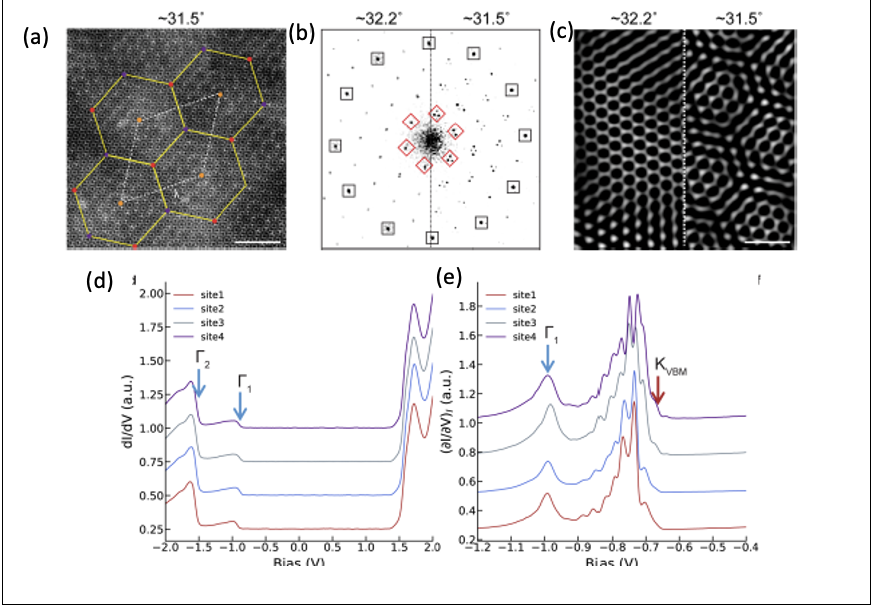Novel Electronic Bands in a Supermoiré Lattice
 Super-moiré patterns identified in WSe2 bilayer with large twist angles
Super-moiré patterns identified in WSe2 bilayer with large twist angles
- Graphene and transition metal dichalcogenide (TMD) bilayers with a small twist angle are known to host flat bands and novel electronic states, correlated insulators, topological insulators, or superconductivity
- Angle deviation near large commensurate angles (32.2) spontaneously form super-moiré;
- Deviation from the commensurate angle determines the second period, directly identified from the TEM spatial images (a,c) and their Fourier transform (b).
- Electronic bands from (d) a 32.2º commensurate bilayer and (e) a 31.1º bilayer.
- A Super-moiré (e.g. 31.1º and 31.5º bilayer) combining the benefits of the large twisted angle (smooth moire pattern without reconstructions) and small twist angle (narrow electronic bands)
 Super-moiré patterns identified in WSe2 bilayer with large twist angles
Super-moiré patterns identified in WSe2 bilayer with large twist angles